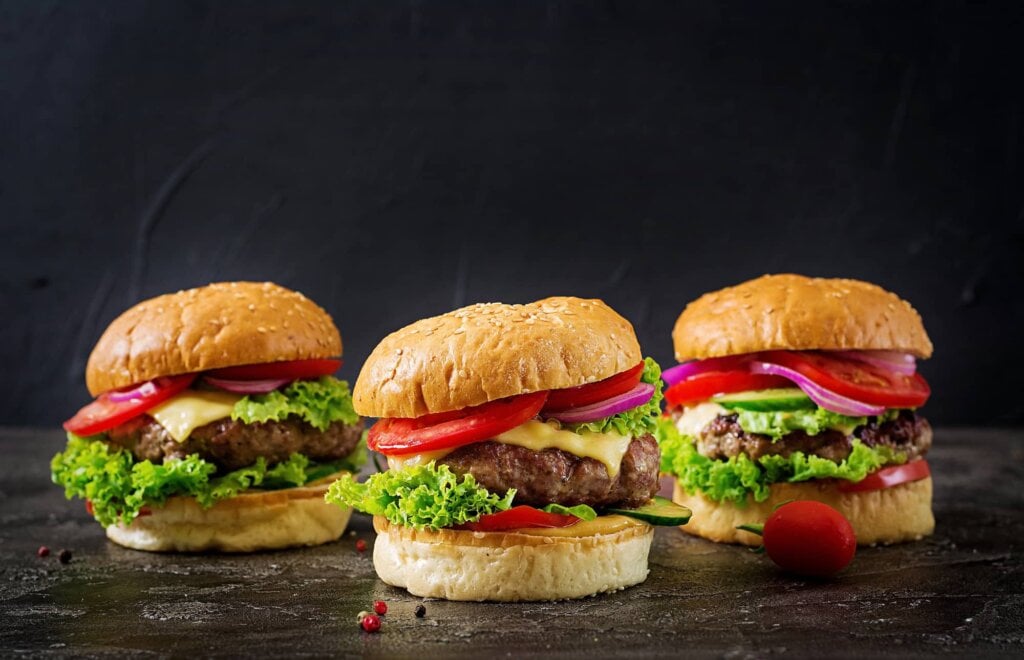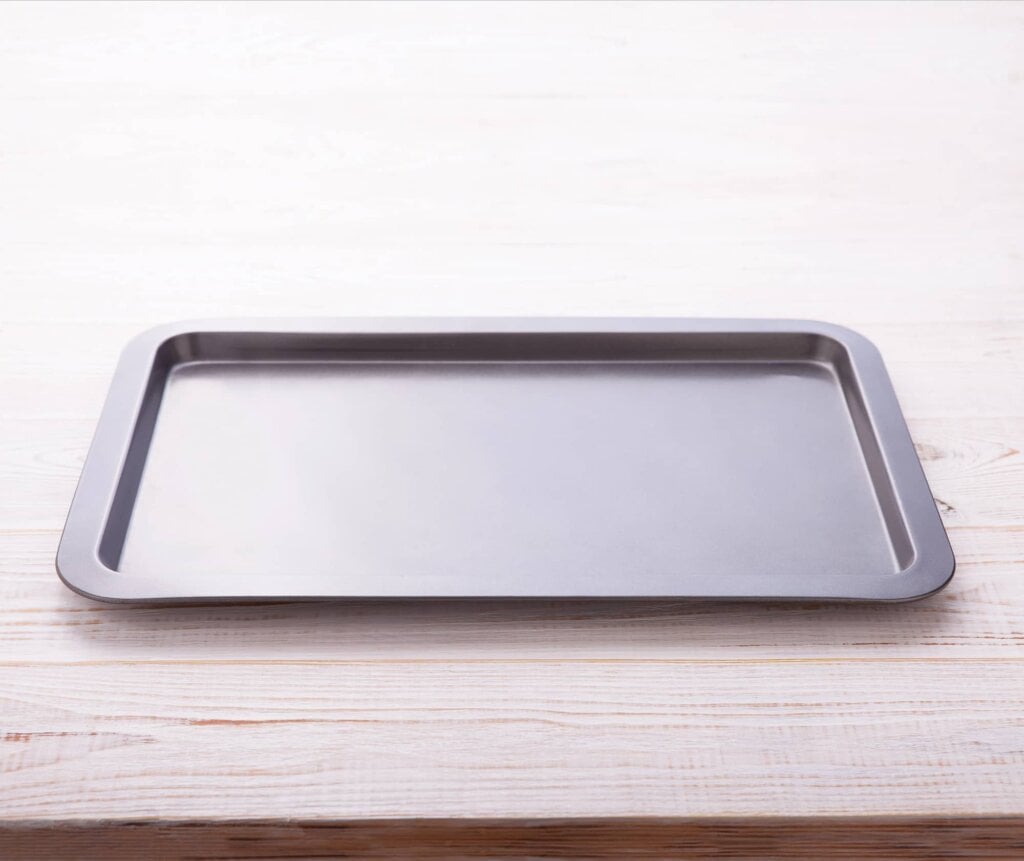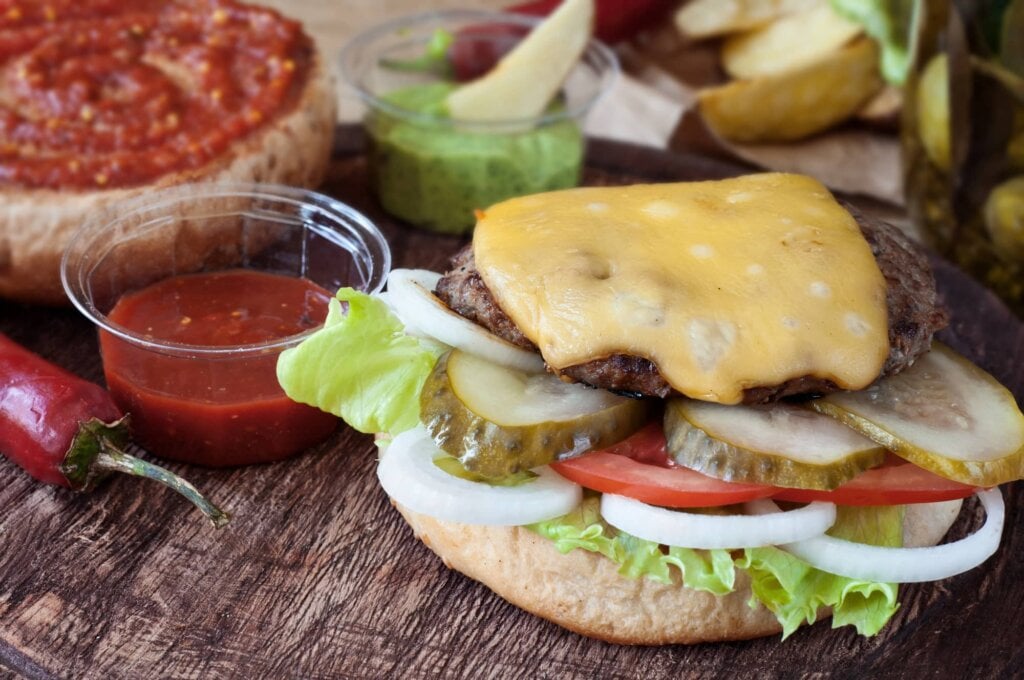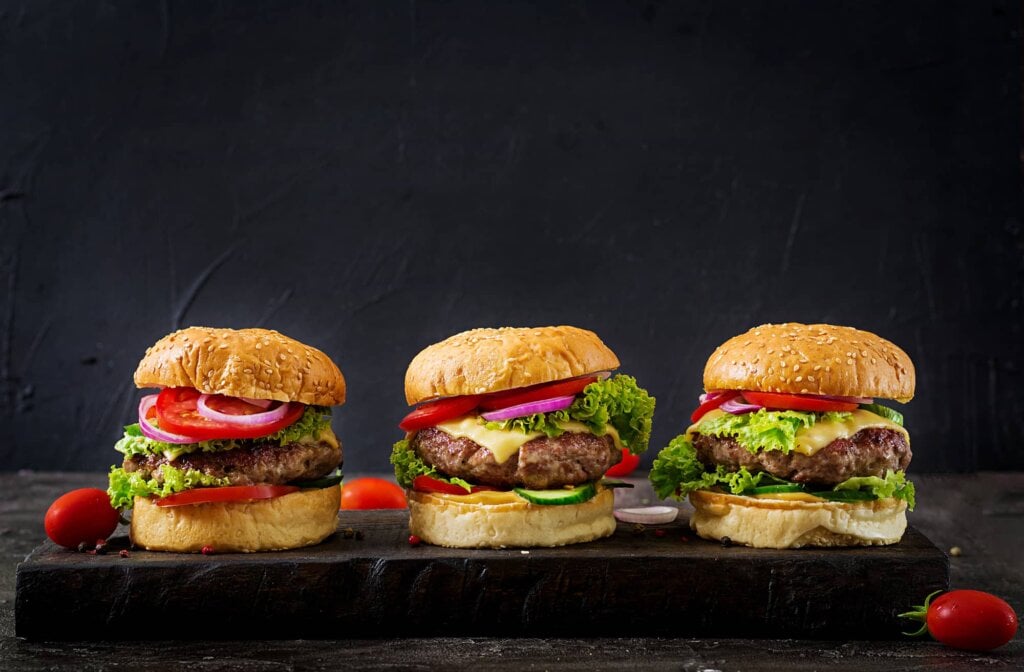
Are you dreaming of juicy, meaty burgers but it’s too rainy or cold to spark up the grill? Turn to your humble kitchen oven to broil burgers instead. This cooking method is used by many fast food chains and fine restaurants alike for great results. If you’re not familiar with the tricks for broiling in the oven, you could end up with uninspiring burgers and a greasy oven. Use our quick guide to get the flavorful results you want while also keeping splatters under control.
What You’ll Need to Broil a Burger
For the best results, you need a few kitchen tools to go with your oven. A deeper metal baking dish with at least ½ inch sides will contain any fat and juices while preventing splatters and splashes. On top of the baking dish, place a wire cooking rack. Cover the top of the rack with aluminum foil, leaving the edges uncovered so that fat can drain into this pan. This also further controls fat splatter by separating the meat from the drippings. A sturdy spatula also helps you flip the meat for even browning on both sides.
You can use a standard electric or gas oven for this cooking method as long as it has a broiling element. This may be located at the top of your oven or in a separate section under the main oven compartment. Either way, you’re looking for an exposed heating element for applying direct heat to the burgers as they cook. Toaster ovens often provide a broiling feature, but they tend to get a little messier in the process due to the smaller compartment size.
What Temperature Should I Set My Oven to for Broiling Burgers?
Use the broil setting on your oven if it has one. If you have access to the heating element but the oven doesn’t provide a separate broil setting, consider using a high heat setting of 450 to 500 degrees F. This provides plenty of heat to brown the burger and cook the center without drying it out. Using a lower temperature extends the necessary cooking time, leading to a drier result. If your oven or electric broiler doesn’t go that high, just use the highest possible temperature you can achieve with it.
What Type of Pan Should I Broil Burgers On?
A baking pan with higher sides, such as a jelly roll pan, is the best way to control splatters while supporting the rack holding the burgers. If you have a cast iron pan with a matching rack set, you can also use that for good results from the extra heat reflected by the dense material.
Adjust the cooking time to be slightly shorter if you use a cast iron baking pan or oven-safe skillet. Griddle and grill pans designed for the oven can also work well since they have a built-in rack to encourage fat drainage during cooking. If you have to use a shallow or nearly flat baking pan, use aluminum foil to line it and add higher sides, and watch out for the hot fat when removing it from the oven.

Keeping Your Oven Clean While Broiling Burgers
The rack and aluminum foil combination we recommend is a great way to prevent splatters of grease from getting all over the inside of your oven. Broiling burgers can be a messy process, but using a leaner mix like 80% meat and 20% fat or even 85% beef also helps reduce the mess.
You can use oven liners to protect the base of the broiling cabinet or oven compartment since you’ll have the meat near the broiling element and won’t need a lot of heat circulation. Just make sure you check how to use them properly before putting them in the oven to avoid damage to the appliance.
If there is a little grease spread around the oven compartment by the time you’re done cooking, try to clean it up as soon as the oven cools down. It’ll come off a lot easier while it’s still warm. Waiting to clean until after you heated the oven multiple times will only lead to a cooked-in layer of grease that is much harder to remove.
The Best Toppings for Broiled Burgers
Broiled burgers work great as cheeseburgers. Top your burgers with a slice of cheddar, Gouda, provolone, American, or any other cheese you prefer for the last few minutes of broiling. If you like stuffed burgers like the Juicy Lucy, simply add your fillings while shaping the patties and cook like usual. Other popular toppings for taking your burger to the next level include:
- Freshly made guacamole, or simple avocado slices
- Barbecue sauce, along with a mess of fried onions and chopped bacon
- Chili, either homemade or from a can
- Pickled jalapenos, pickled onions, or just plain pickles
- Creamy or tangy vinegar-based coleslaw for a crunch
- An entire fried egg
- Classic toppings like sliced tomato, iceberg lettuce, ketchup, and mustard.

Steps to Broiling Burgers
A little extra prep work makes the entire broiling process go smoothly. Start your range hood or other exhaust system as soon as you begin cooking them since the grease can produce a little smoke when it hits the hot element. If you don’t have a range hood, open your windows and prepare to deal with your smoke detector.
Step 1: Thaw Burgers
You need thawed ground beef, ground steak, or pre-shaped patties to broil. If you’re working with frozen beef, let it thaw completely overnight in the refrigerator. Take the meat out of the refrigerator only a few minutes before you’re ready to shape or season it. You don’t want to let ground beef come to room temperature before cooking, but it can warm up slightly first so it’s easier to work with.
Step 2: Season Burgers
Separate the meat so each patty is between 6 and 8 ounces. Press them out into a roughly puck-shaped patty, then use three of your fingers to carefully shape them so the center is thinner than the edges. You want the inner three inches of the patty to be about 1/4th of an inch below the edges. This provides an even cooking experience while preventing a patty that is thicker in the center than the edges.
Season your patties with at least Kosher salt and black pepper. Garlic powder, paprika, chili powder, and herbs like oregano and thyme are also commonly used. You can use minced garlic mixed into the meat, along with finely chopped onions and mushrooms, for a greater depth of flavor. Or you can keep the meat simple and add flavor with toppings instead.
Step 3: Broil Burgers to Desired Doneness
Set your oven rack to the highest possible setting under the upper element, or open your broiler cabinet and make sure it’s clean and clear of extra baking pans.
Pre-heat your oven to 500 degrees F or switch the broiling setting on. A dedicated broiler should only take a few minutes to heat up. If you’re heating the whole oven, give it about 10 minutes to reach near temperature.
Place the pan full of burgers right under the broiler element. Cook for 3 to 4 minutes per side. Keep flipping the burgers until the edges are starting to brown. Check the internal temperature with an instant read thermometer and remove it when it hits the temperature listed below for your preferred level of doneness.
Burger Doneness Temperature Guide
- Rare: 120 to 125 degrees F
- Medium Rare: 130 to 135 degrees F
- Medium: 140 to 145 degrees F
- Medium Well: 150 to 155 degrees F
- Well Done: 160 to 165 degrees F.
Step 4: Add Toppings and Serve!
Place each broiled burger on a bun, adding your favorite toppings. Serve immediately since there’s no need to rest these delicious burgers before enjoying them.

Conclusion
Skip the fast food line and enjoy the same kind of juicy, seared flavor at home by broiling your own burgers. You’ll soon learn exactly how long to cook each patty in your particular oven based on the ground meat you use. You can even experiment with using this same technique to create great chicken and turkey burgers for your family members and friends who prefer those meats.

